Successful Conclusion of the 8th Roundtable Meeting of the High-Efficiency HJT 740W+ Club: Radiant Brilliance, Shining a Light on the Future
On November 19, 2024, the 8th Roundtable Meeting of the China High-Efficiency Heterojunction (HJT) 740W+ Club successfully concluded in Chengdu, Sichuan. Tongwei served as the rotating chairman for this assembly. The event brought together representatives from 14 member companies, listed alphabetically as follows: Golden Solar, Grand Sunergy Technology, Hency Solar Technology, Huasun, Jetion Solar, Leascend Photovoltaic, Mingyang, Quanwei New Energy, Risen Energy, SoleFiori, Soltrend, SPIC New Energy, Tongwei (again, as the rotating chairman), and Winhitech. The meeting was honored by the presence of leading industry experts, with TÜV Rheinland and Solarzoom invited as esteemed guests. During the meeting, participants engaged in in-depth discussions on HJT technology, production, and market development, jointly mapping out a promising future for the HJT sector.
Liu Shuqin, Chairman and CEO of Tongwei, delivered a welcome speech, emphasizing the resilience of China’s photovoltaic (PV) industry, which has navigated various cycles to become a hallmark of national excellence. Liu highlighted the critical role of technological advancements, noting that among various technological pathways, HJT technology stands out with its superior surface passivation, low temperature coefficient, high bifaciality, and exceptional low-irradiance response.
Liu emphasized that Tongwei is at the forefront of HJT technology research and development. Since 2018, Tongwei has been actively investing in the advancement of HJT technology. Its core innovations—bifacial microcrystalline technology, copper interconnection, and 0BB technology—have emerged as pivotal "instruments" for cost reduction, efficiency enhancement, and facilitating large-scale mass production. At the end of October this year, Tongwei’s HJT modules had achieved a record-breaking maximum output power of 776.2W and a module efficiency of 24.99%, setting a new benchmark for the ninth time.
Dr. Xing Guoqiang, the Chief Technology Officer for PV at Tongwei, chaired the meeting, guiding guests through comprehensive discussions on critical topics such as HJT module testing, wafer dimensions, and market prospects. He emphasized that the potential for technological improvement in HJT technology will determine its future growth. Dr. Xing also underscored the importance of collaborative efforts within the industry to foster a stronger ecosystem that supports the advancement of HJT.
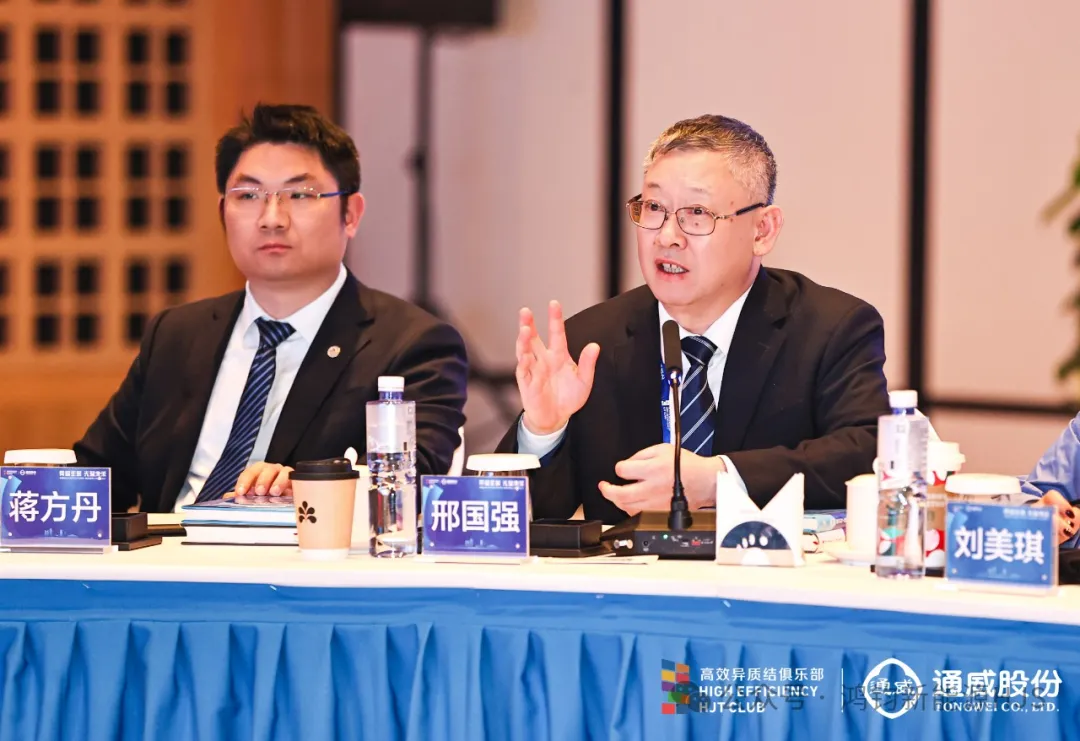
During the discussion, Li Changhong, CEO of SoleFiori, remarked that the event bolstered the industry’s confidence in HJT technology. He further expressed his hope that the technical expertise accumulated by various entities would collectively propel the industry forward.
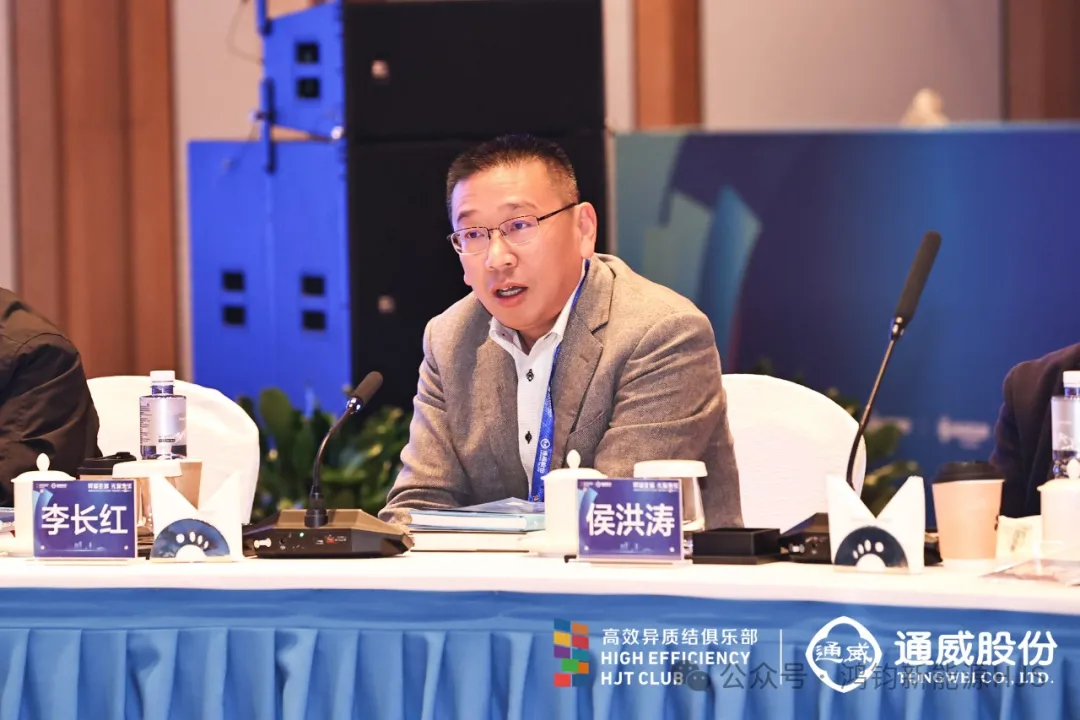
01 Current Status and Testing Analysis of HJT Technology
During the meeting, Liu engaged in in-depth discussions with attendees regarding HJT technology and the current market landscape. Li Weichun, Vice President of TÜV Rheinland’s Global Power Electronics Services, emphasized that innovation is key to progress. Li suggested that HJT technology innovation should focus on reducing costs, enhancing efficiency, and improving quality to strengthen its advantages.
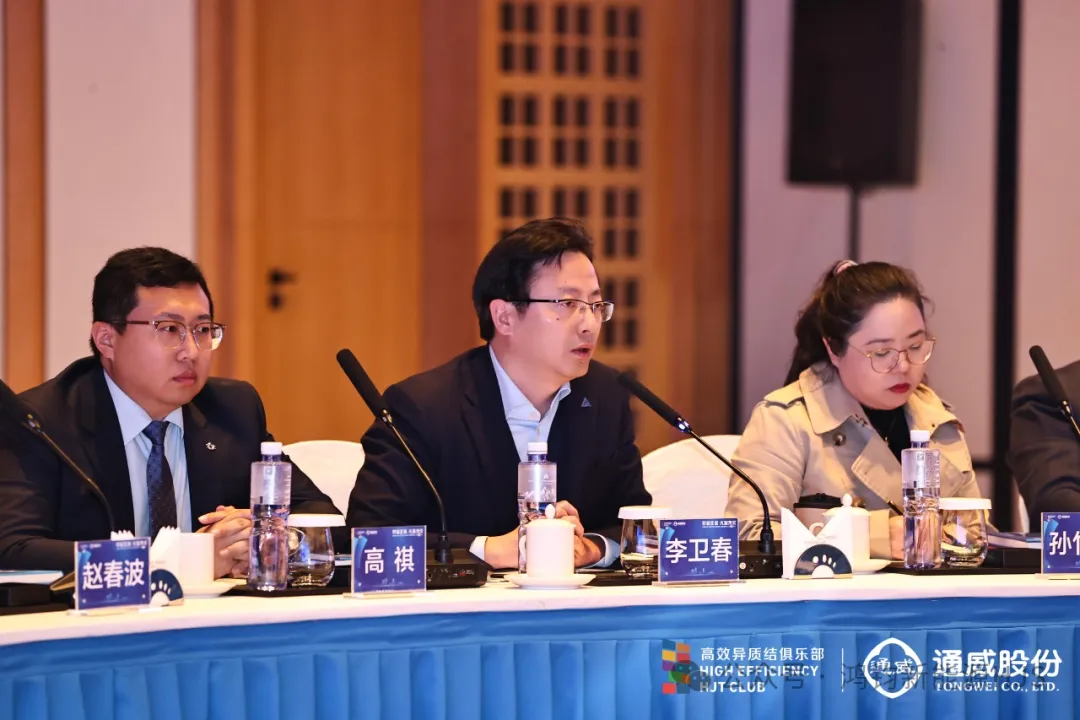
Wang Xin, Chairman of Leascend Photovoltaic, emphasized the significant accomplishments achieved by the club since its inception 8 months ago. Through collective efforts in marketing, brand promotion, supply chain coordination, and technology sharing, the club has made considerable progress. As a leading company in the PV industry and the rotating chair of this meeting, Tongwei has elevated the club's development in technical collaboration to a new height. The newly released PV Manufacturing Industry Normative Conditions (2024) by China’s Ministry of Industry and Information Technology encourages the adoption of new technologies. With its high conversion efficiency, bifacial power generation, low-light performance, minimal degradation, low carbon footprint, low energy consumption, and cost leadership, HJT technology is well-positioned for significant growth opportunities. Leascend Photovoltaic is dedicated to strengthening cooperation with other entities to foster the development of the HJT industry.
Zhang Zhongwei, the Chief Scientist and Dean of the New Energy Research Institute at Grand Sunergy Technology, expressed his hope to collaborate with all attendees to further the progress of HJT technology and increase its market share.
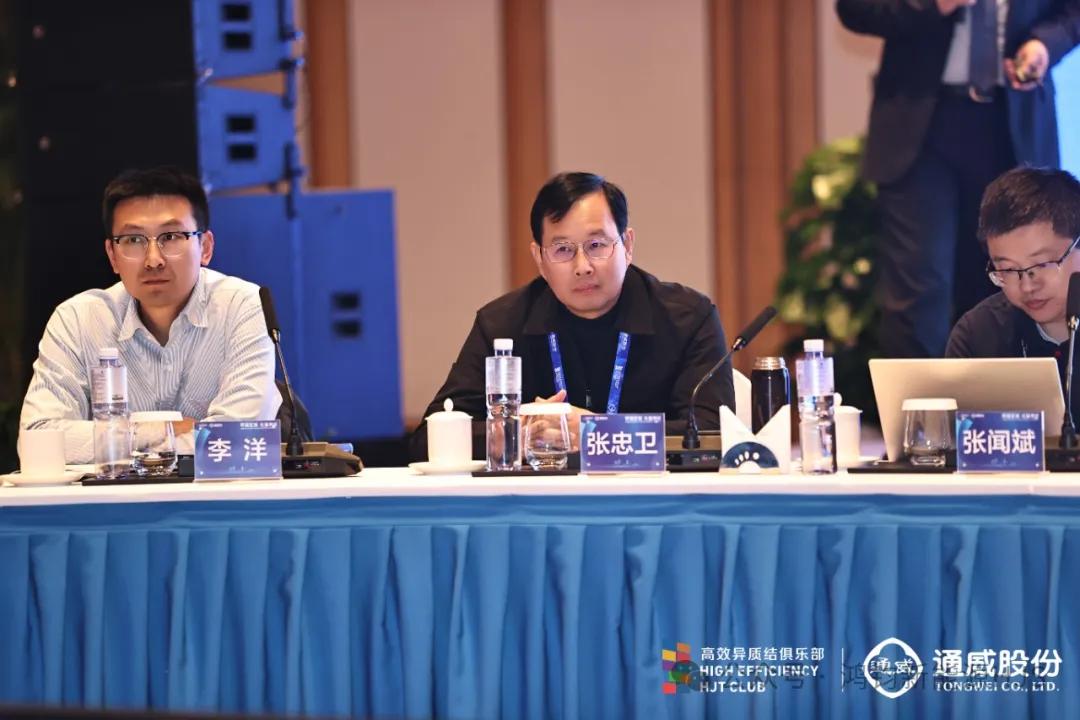
Dr. Gao Qi, a solar and commercial product technology expert from TÜV Rheinland Greater China, delivered a presentation titled Analysis of Electrical Performance Measurement Data and Testing Process Development Progress for TÜV Rheinland's HJT PV Modules. To secure market recognition and grow its share, HJT technology must showcase its superiority in performance and reliability. Currently, the overall performance of HJT modules in the market is influenced by varying processes, equipment, and production methods. Leading module manufacturers have achieved module efficiency and performance significantly higher than market averages. Dr. Gao expressed hopes for enhanced collaboration among all participants in HJT measurement, testing, and standard development.

Dr. Xing emphasized that while cost reduction is crucial for HJT technology, efficiency improvement may be even more vital. Without it, the differentiation advantage of HJT technology could diminish. Dr. Jiang Fangdan, Director of the PV Research Institute at Tongwei’s PV Technology Center, added that it would be more reasonable to explain the metastable state of HJT technology in terms of its operational state.
Xu Xin, Senior Vice President of Huasun, highlighted the unique benefits of HJT technology in large-scale applications, particularly for ground-mounted power stations. However, he also emphasized the necessity to enhance competitiveness in smaller formats to secure a market share. Zong Jun, CEO of SPIC New Energy, advocated for collective efforts to elevate the standards for HJT module reliability testing and other aspects, thereby strengthening the competitiveness of these products.
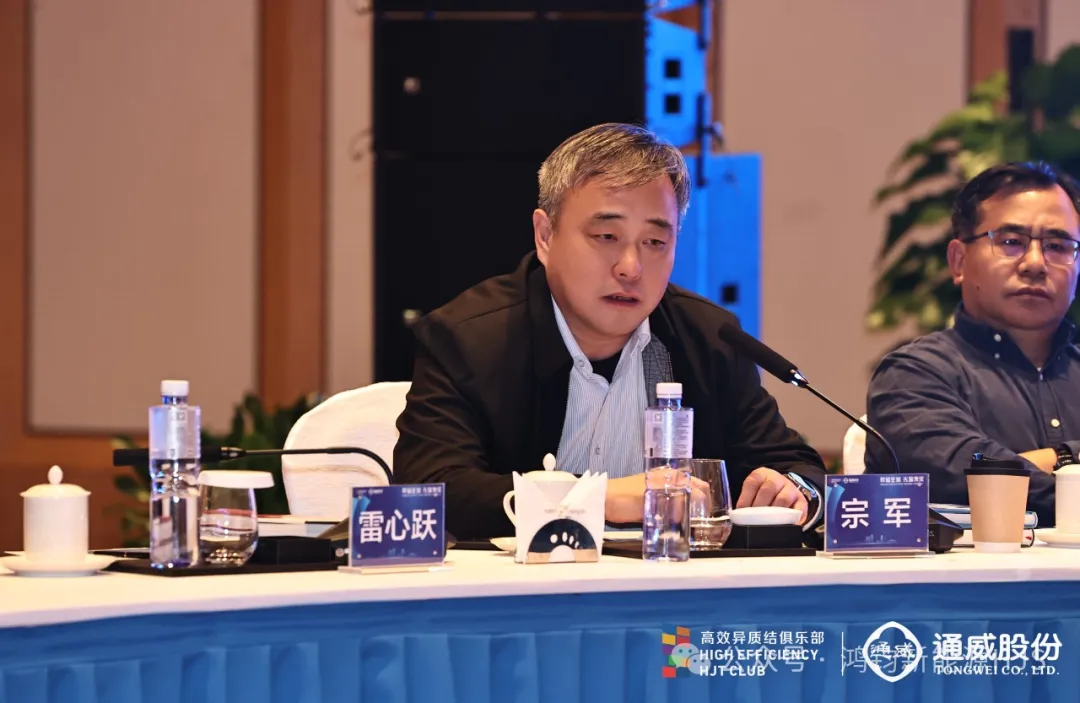
02 HJT Outdoor Validation, Production Data, and Optimal Dimensions
During the discussion on "Outdoor Validation Data for HJT," Xu noted that HJT modules exhibit exceptional performance in outdoor validation tests under various conditions, including both high-temperature and low-temperature environments. Key indicators such as power generation, decay rates, bifaciality, and low-light responsiveness all show outstanding results. As a result, these HJT products have gained significant recognition in international markets.
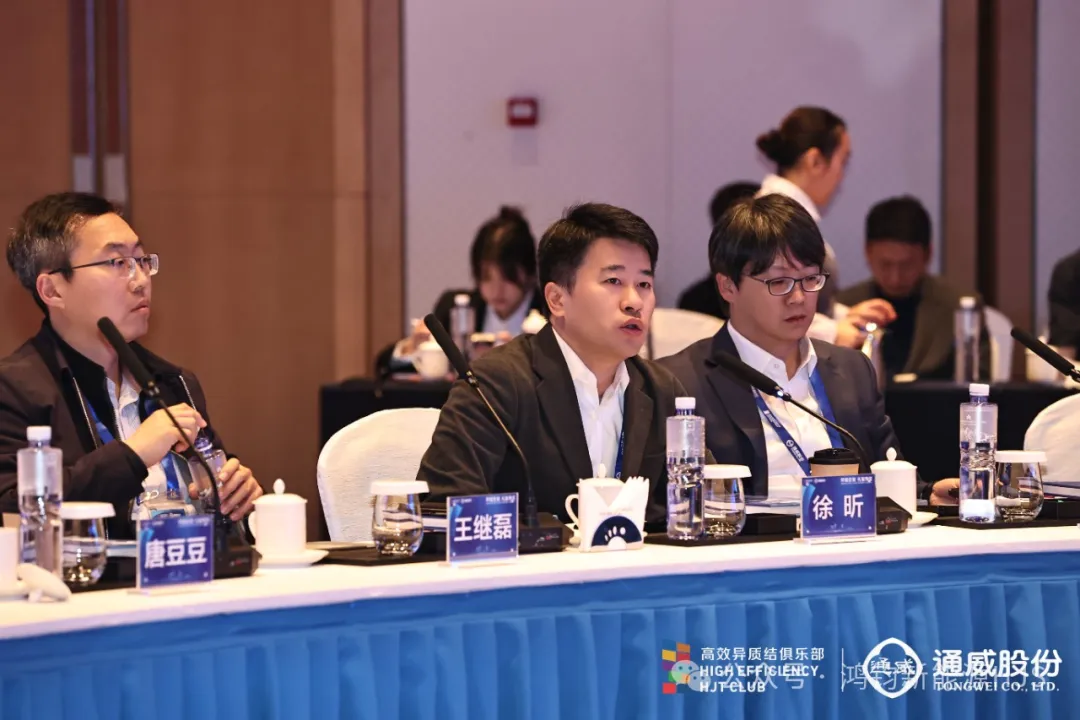
Lei Xinyue, President of Quanwei New Energy, stated that HJT is now emerging as a separate segment in the domestic large-scale project bidding and procurement. HJT products have made significant strides in various applications, including outdoor settings, agriculture, and marine environments. These advancements further underscore HJT’s advantages in PV module selection for practical applications.
Xia Zhengyue, Director, and Dr. Long Wei, Director of Tongwei's PV Technology Center, attended the meeting. Dr. Long delivered a speech on Benchmarking Production Unit Consumption for HJT Cell Manufacturing, offering insights on enhancing production line technology through benchmarking key indicators, water consumption, and other production data from various enterprises. Wang Jilei, CTO of Soltrend, observed that while certain critical indicators for HJT technology still need optimization, future practical technological advancements could improve production line efficiency and decrease manufacturing costs.
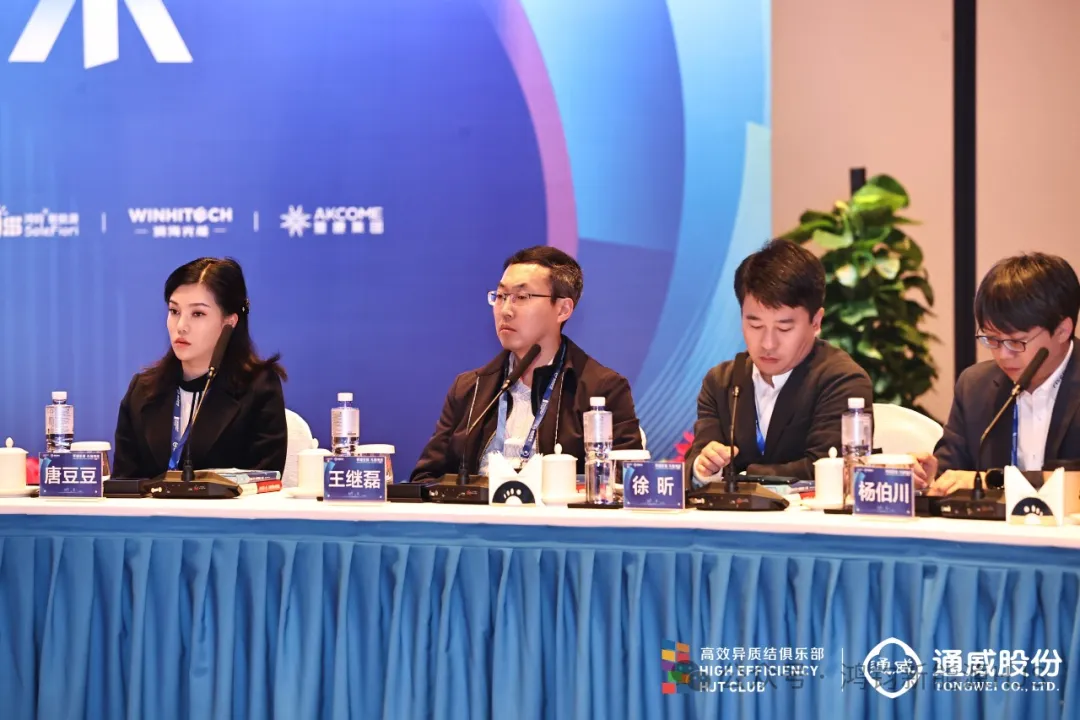
Dr. Yang Bochuan, Director of the Global PV Research Institute at Risen Energy, delivered a presentation on The Optimal Dimensions of HJT Modules and Their Impact on Crystalline Silicon Pulling, Modules, and Cells. In his analysis of silicon wafer dimensions and development trends, he emphasized the need to identify silicon wafer sizes better suited to the HJT plate-type processes. Optimizing wafer dimensions under the current specifications for crystalline silicon pulling, cells, and modules could significantly enhance product competitiveness.
Dr. Xing suggested conducting a more in-depth analysis of silicon wafer dimensions, focusing on parameters such as the spacing between wafers to determine the optimal size. This method could help prevent the need for repeated technological modifications due to future upgrades in wafer dimensions.
03 HJT Patent Analysis and Market Outlook
Attendees exchanged views on “Market Reception of HJT and Future Market Prospects.” Xu believed that HJT is facing an unprecedented opportunity based on feedback from customers in the European market. Zong agreed with this view and pointed out that the improvement of HJT module efficiency is especially important for large-scale ground-mounted power stations in the future.
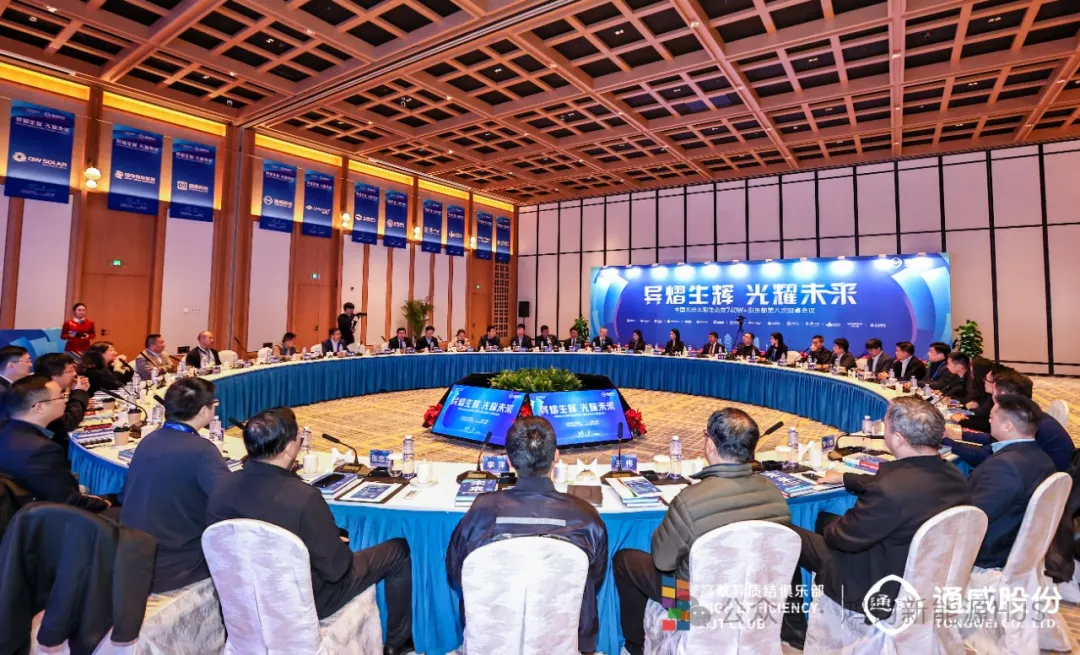
Zeng Qingzhi, Chairman of Winhitech, emphasized that enhancing the HJT market share requires a collective effort to expand the upstream and downstream sectors in order to better promote technological progress. Qiu Wenkai, Executive General Manager of Mingyang, suggested that it can also be increased through various solutions, including new power reforms and high-speed PV.
Ye Dongting, Deputy General Manager of Hency Solar Technology, hopes that industry leaders will share more technologies to drive cost reductions and efficiency gains across the HJT sector. Zhan Zigang, Vice President of Procurement at Golden Solar, agrees with this perspective. Guo Wanwu, Deputy General Manager of Jetion Solar, believes that cost reductions through technological advancements should encompass both upstream and downstream processes and that reducing fixed investments can boost investment willingness in HJT technologies.
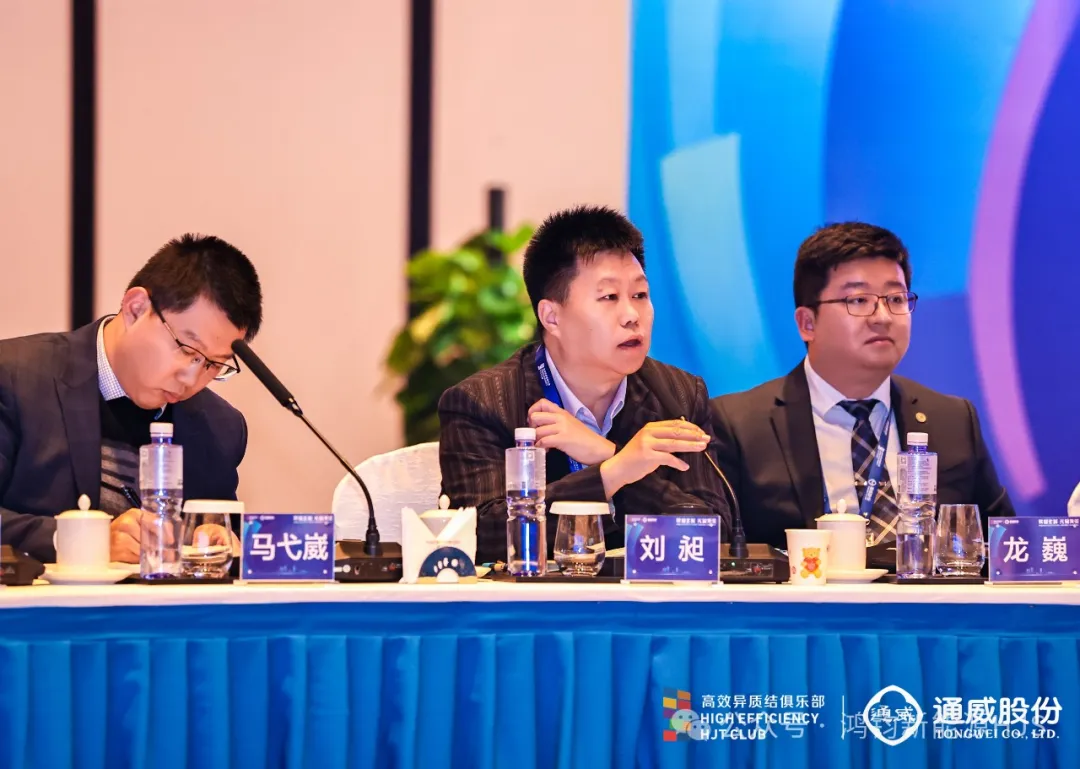
Regarding the HJT patent risks that have attracted significant industry attention, Dr. Jiang believes the reasons are complex. Nonetheless, the current risk associated with HJT patents remains relatively low. Liu Chang, Executive Secretary-General of the Club and founder of Solarzoom, points out that external factors, particularly those related to technology patents, could exacerbate existing issues. Against this backdrop, HJT patents are seen as having distinct advantages. In the upcoming PV market, especially overseas, HJT has the potential to unlock significant value. It is expected that more firms will adopt HJT technology.
To conclude the conference, Liu announced Mingyang as the next rotating chairman and expressed hope that all attendees would reconvene in Zhongshan in the future to summarize the year's developments and engage in more in-depth discussions about the prospects for the upcoming year.
Tongwei also invited the guests to visit the exhibition of the Tongwei Global Innovation and R&D Center to gain deeper insights into Tongwei's research and development layout and achievements in PV technology.
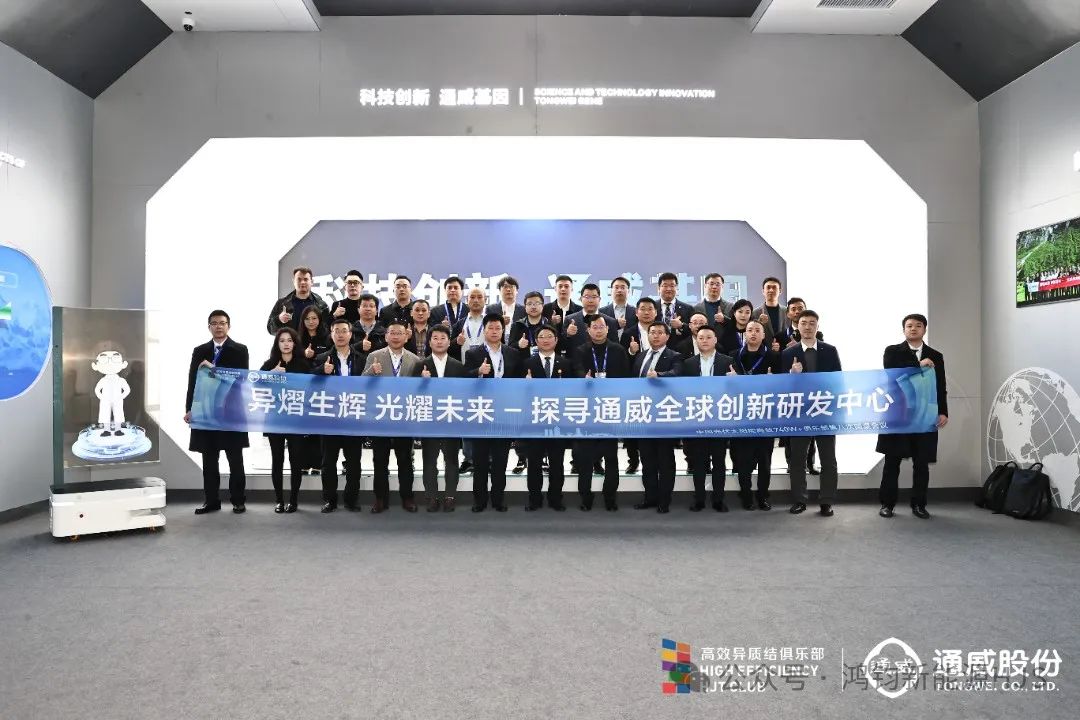
Following the successful conclusion of the 8th Roundtable Meeting of the Club, we have witnessed the positive actions of Chinese enterprises within China's PV HJT sector and their unwavering belief in the technology's future trajectory. This gathering has also signaled to the broader PV industry a spirit of collaboration among several leading and prominent enterprises, fostering a sense of optimism for what lies ahead. Industry leaders, talents, and experts from the HJT sector engaged in deep discussions on various topics, offering further direction for the industry's growth and contributing diverse perspectives to the shaping of industry standards. This fully underscores China's robust capabilities in PV technology research and development, as well as its commercial applications.








